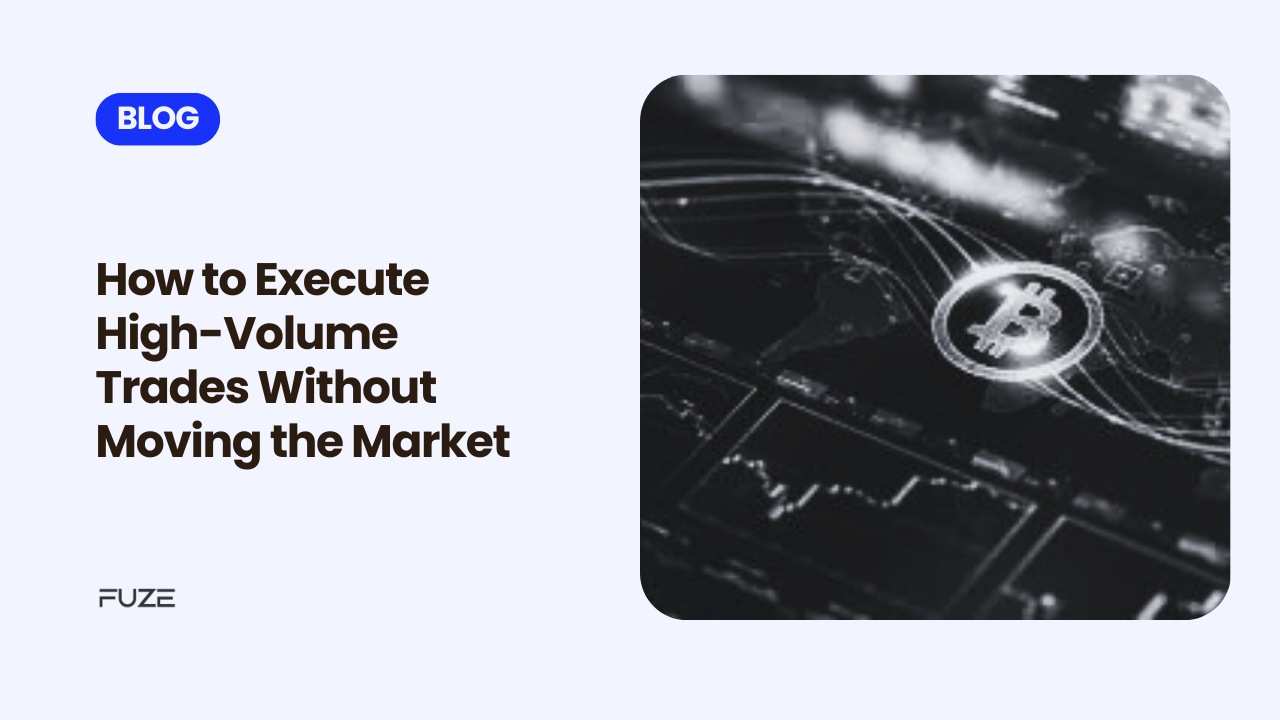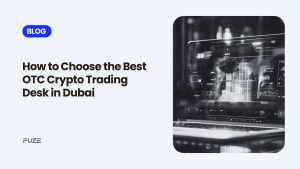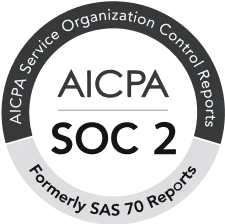In financial markets, especially crypto, executing large trades presents unique challenges. When dealing with significant volumes, one major concern is avoiding market impact, the risk that a large buy or sell order will shift the price unfavorably. Market impact can lead to slippage, where traders receive worse prices than expected, potentially eroding profits or increasing losses.
For institutional investors, hedge funds and high-net-worth individuals, mastering the art of executing high-volume trades quietly and efficiently is essential. This blog breaks down the key strategies and tools used to minimize market impact and keep trading discreet.
Why Does Market Impact Matter?
Imagine trying to buy a large quantity of a cryptocurrency like Bitcoin. If you place an order too large for the current available liquidity, the price will rise as your buy orders consume the existing sell orders in the order book. This causes slippage, where you end up paying more per coin than the initial price.
Similarly, selling large amounts can push prices down. This market movement can alert other market participants, inviting front-running or additional volatility, which can make execution more costly and complex.
For traders handling millions of dollars in a single trade, these effects can lead to significant unexpected costs. Thus, reducing market impact is not just desirable, it is critical to efficient trading.
Key Strategies to Avoid Moving the Market
- Over-The-Counter (OTC) Trading
OTC trading is the most common method for handling large-volume transactions without disrupting the market. Instead of sending a large order to a public exchange, buyers and sellers trade directly or through specialized brokers.
OTC desks aggregate liquidity from various sources, enabling multi-million dollar trades to happen discreetly, off-exchange. By avoiding the visible order books, OTC trades reduce price slippage and protect trader anonymity.
One advantage of OTC trading is the ability to negotiate terms and execute complex trades that might be difficult or costly on exchanges. With the rise of regulated OTC providers, traders gain additional assurance about compliance and security.
- Algorithmic Trading and Execution Algorithms
Sophisticated algorithms help break down large orders into smaller, timed slices that execute over a defined period. These algorithms use real-time data to determine the optimal pace to avoid moving the market.
Common algorithmic strategies include:
- TWAP (Time Weighted Average Price): Executes trades evenly over time to achieve the average market price.
- VWAP (Volume Weighted Average Price): Executes trades in proportion to market volume to blend in with natural market activity.
- Iceberg Orders: Only a small portion of the total order is visible on the order book at any time, hiding the full size.
Using these algorithms, traders can minimize the footprint of their activity, reducing the risk of price disruption.
- Using Liquidity Pools and Dark Pools
Some markets offer “dark pools,” private trading venues where orders are not displayed publicly. These venues provide access to liquidity without exposing trade intentions to the broader market.
Liquidity pools, including decentralized finance (DeFi) pools, also offer deep liquidity that can absorb larger trades without significant price changes. Traders may choose venues that aggregate liquidity from multiple sources to get the best execution.
- Timing and Market Conditions
High-volume trades are often timed to coincide with periods of high liquidity or volatility where price movements are less sensitive to individual trades. For example, executing during peak market hours or around major news releases can help disguise large orders within broader market activity.
Traders also avoid trading during thin markets or times of low volume to reduce the risk of market impact.
- Pre-Trade Planning and Analysis
A thorough understanding of market depth, order book dynamics and historical trading patterns is essential. Traders often use market impact models to estimate how their orders might influence prices.
Pre-trade analysis includes assessing:
- Order book liquidity at different price levels
- Typical volume and volatility patterns
- Potential risks of slippage and front-running
Having this insight allows for informed decisions on order size, timing and venue selection.
The Role of Technology and Data
Access to real-time market data and sophisticated trading technology is a game changer for large traders. Tools that aggregate liquidity, monitor order books across multiple venues, and automate execution help reduce market impact significantly.
Trading platforms that combine fiat and crypto liquidity, along with secure, regulated OTC services, provide seamless execution environments. This ensures that trades occur smoothly, compliantly and at competitive prices.
Connecting With Fuze’s OTC Approach
At Fuze, we recognize the importance of smooth execution for institutional clients and large traders. Our OTC desk integrates liquidity from global markets and diverse counterparties, providing a robust, regulated channel for large-volume transactions.
By combining deep liquidity, licensed infrastructure and advanced execution tools, we help clients execute large trades efficiently without disrupting the market. The focus is on building trust, transparency and speed for traders who need more than just price, they require reliability and regulatory confidence.
Conclusion
Executing high-volume trades without moving the market is both an art and a science. Through OTC trading, algorithmic strategies, dark pools, timing, and market insights, traders can significantly reduce slippage and price disruption.
As digital asset markets mature, access to regulated, sophisticated infrastructure is key to effective execution. Understanding these tools and approaches empowers traders to navigate complex markets confidently.
For anyone managing substantial crypto transactions, careful planning and using the right partners make all the difference. The market impact challenge is real, but with the right approach, it is far from insurmountable.
Disclaimer: Virtual assets carry significant risks, including high volatility and potential loss of your entire investment. They are not backed by governmental protections, and recourse may be limited in case of loss. Always assess your risk tolerance, fully understand the risks, and seek independent financial advice if needed before investing.
Frequently Asked Questions
- What is market impact, and why is it important for high-volume trades?
Market impact refers to the change in an asset’s price caused by large buy or sell orders. It’s important because large trades can cause slippage, resulting in worse prices and higher execution costs. Managing market impact helps preserve value during large transactions. - How does OTC trading help minimize price disruption?
OTC (Over-The-Counter) trading enables large transactions to be executed privately, away from public exchanges. This reduces visibility, prevents front-running, and avoids slippage by accessing deep, aggregated liquidity across multiple counterparties. - What are execution algorithms, and how do they work?
Execution algorithms like TWAP, VWAP, and Iceberg Orders help break large orders into smaller chunks that execute over time or in response to market volume. These algorithms reduce market footprint and help achieve more favorable average pricing. - When is the best time to execute high-volume crypto trades?
High-volume trades are best executed during peak liquidity periods or around high-activity events when markets are less sensitive to individual trades. Avoiding thin or illiquid trading windows minimizes the chance of price swings and slippage. - What makes Fuze’s OTC infrastructure suitable for large institutional trades?
Fuze provides a licensed, secure, and compliance-first OTC infrastructure with deep liquidity access and fast execution. Institutions can trade high volumes confidently, without affecting public prices or compromising on regulation and operational reliability.







